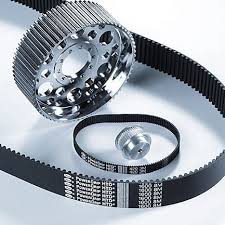Have
you recently suffered a car breakdown due to timing belt break that you had to tow
your automobile to a repair shop? Was the effect damaging on your car’s valves
that you had to change the valves completely? Such unnecessary expenditure and
inconvenience can be avoided.
Timing
belts have replaced timing chains on many of today's engines. Not to be
confused with “V-belts” or “Serpentine belts”, which are located on the outside
of the motor to drive accessories, timing belts perform a much more vital role.
The
purpose of a timing belt is to provide a connection between the camshaft and
crankshaft to ensure that the pistons and valves operate together in proper
sequence. Timing belts have proven to be lighter, quieter and more efficient
than chains, but those benefits come at a cost - they require more frequent
replacement than chains.
Timing
belts are used in two types of engines designated as "free-running"
and "interference". If the timing belt breaks on a “free-running”
design, the engine will stop and you will need a tow to the repair shop. There
is enough clearance between the pistons and valves so no mechanical damage
usually occurs. The installation of a new belt is usually all that is needed to
get you back on the road.
If
the timing belt breaks on an “interference engine”, mechanical engine damage
will occur. Most commonly, the damage involves the pistons hitting open valves,
resulting in the need for expensive repairs. In extreme cases, replacing the
engine may be required.
Breakage
is not the only reason to replace your timing belt. Looseness and wear can
allow the timing belt to slip, resulting in very poor performance, a no-start
condition, or engine damage.
Proper
maintenance requires timing belt replacement at regular intervals – before it
breaks or wears out. The manufacturers provide a replacement schedule and
repair information for this critical component.

No comments:
Post a Comment